Lowdown: Festival Fever, Big Questions & Artistic Opportunity
We celebrate a huge week for Aotearoa performing arts, get the latest on the creative community's simmering issues and all the arts news.
Written by
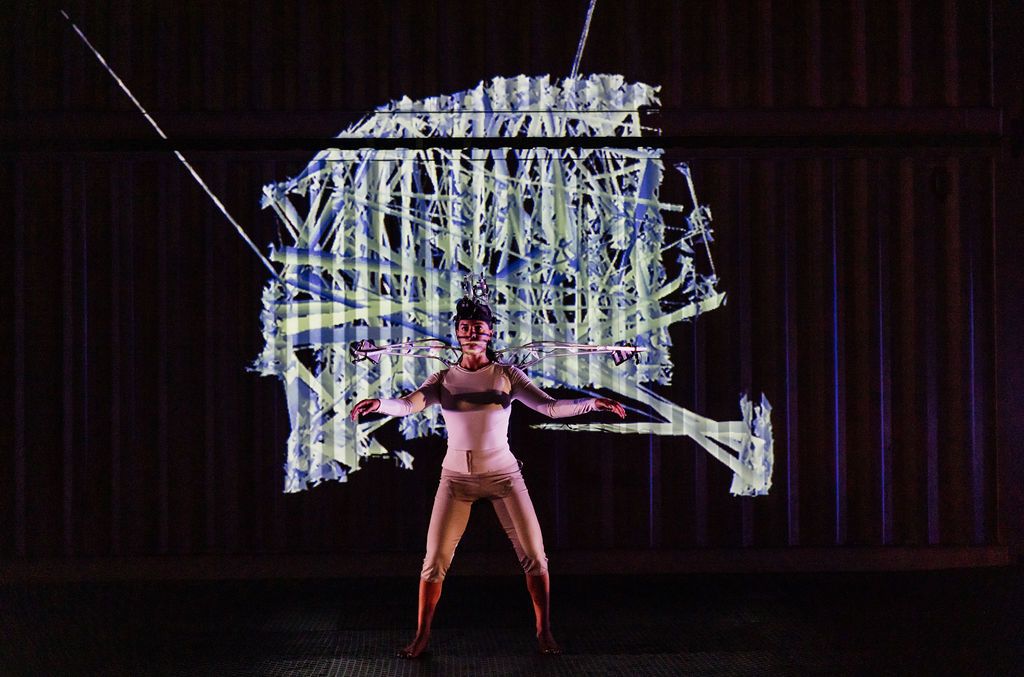
Has there ever been such a plethora of big creative events reach their satisfying conclusion at the same time - at least since the start of the pandemic?
It's been a huge week for iconic and large-scale festivals up and down Aotearoa. They've been wide and varied in their line ups but all giving artists a stage and appreciative audiences something to cherish.
Auckland Arts Festival (AAF) wrapped up in the weekend, with more than 60,000 people from across the Auckland Region attending both the ticketed and free events. 36 venues hosted around 700 performers and crew across Tāmaki Makaurau over the 18 day run.
AAF Artistic Director Shona McCullagh told The Lowdown "it’s been a joy to bring a Festival back to the people of Auckland, visitors from across the motu, and abroad. The feedback has been overwhelming – people have loved the buzz of the multi-offerings of the Festival and seeing work that has inspired, uplifted and entertained them in many ways.

"I’m enormously proud of our Festival team who are an incredibly passionate bunch of kick-ass arts professionals. For our first fully international festival since 2020, the delivery went remarkably smoothly – thanks to the artists, the technicians, the front of house staff, the volunteers, the PR and marketing team, artist liaison, programme managers and our amazing venue partners."
When pushed for her stand-out show, McCullagh replied "it’s like asking which is your favourite child – I love them all which is why I programmed them! – and for so many different reasons.
"The Picture of Dorian Gray does stand out in terms of its breath-taking vision and execution, and the performance from one of the finest actors alive today. It’s also very cool that the show’s Director Kip Williams’s grandmother grew up in Devonport and he went to visit the house she was raised in."
Tāmaki couldn't get enough of its cultural offerings - at the same time as AAF was wrapping up, Cyclone Gabrielle relief concert #Maranga Rise Up Aotearoa was going off in West Auckland.
One of the headliner performers, Ria Hall spoke glowingly of the experience - broadcast live on Whakaata Māori and TVNZ as well as to an appreciative audience at Parrs Park.
She shared on social media "#Maranga Rise Up Aotearoa showed the world the power of connection, grass roots know how, manaakitanga with a wairua that was next to none.
"When Māori come together and pull on our resources and collective might - anything is possible. We’ve witnessed that across every single major disaster - there is no denying that, it is innately who Māori people are and what we do best.
"I’ve never been involved in a kaupapa more stunning than what we just had (on Saturday). It was a moment in time - a moment in our history.
"And to raise upwards of 700K is testament to everyone’s generosity and spirit!"
Things were just as bright and joyous in Wellington last weekend - with the wonderfully eclectic and much loved CubaDupa commandeering the Capital in the way only it can.
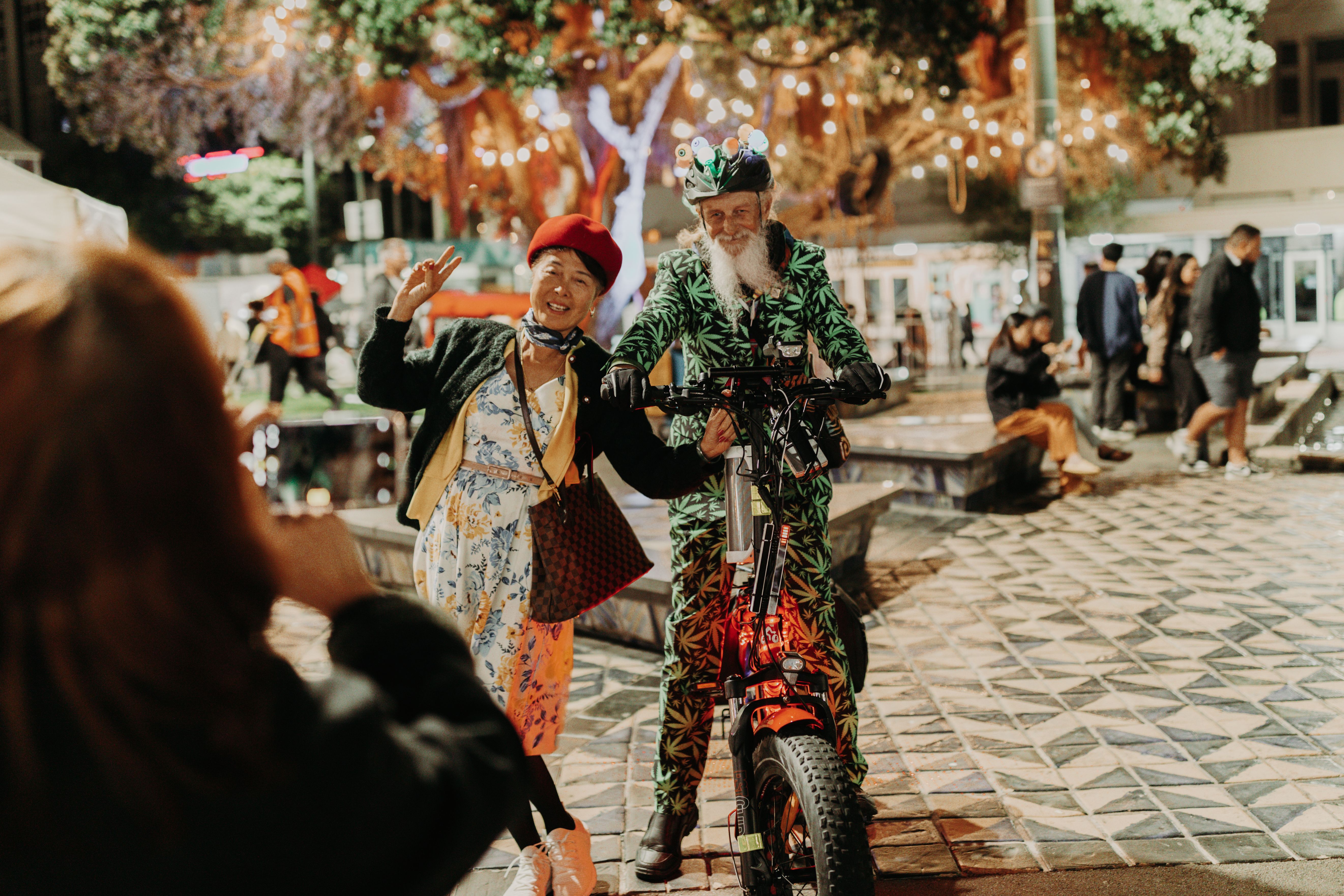
Over the space of 19 hours, the Cuba Street Precinct saw more than 1500 individual performers showcase their skills in front of an estimated 120,000 people.
The event's Director - and Chief Executive of Creative Capital Arts Trust - Drew James revelled in the event's return after its heartbreaking 2022 cancellation.
“We are so delighted by the crowds and amazing atmosphere that heralded CubaDupa back to the streets of Wellington. Even the weather played its part. The Mass Cuba Street Second Line Orchestra of 40 musicians was a fitting finale for a festival that featured over 240 acts, wowing our audience at every street corner. Thank you Wellington for letting us take over the streets and coming out to celebrate our city.”
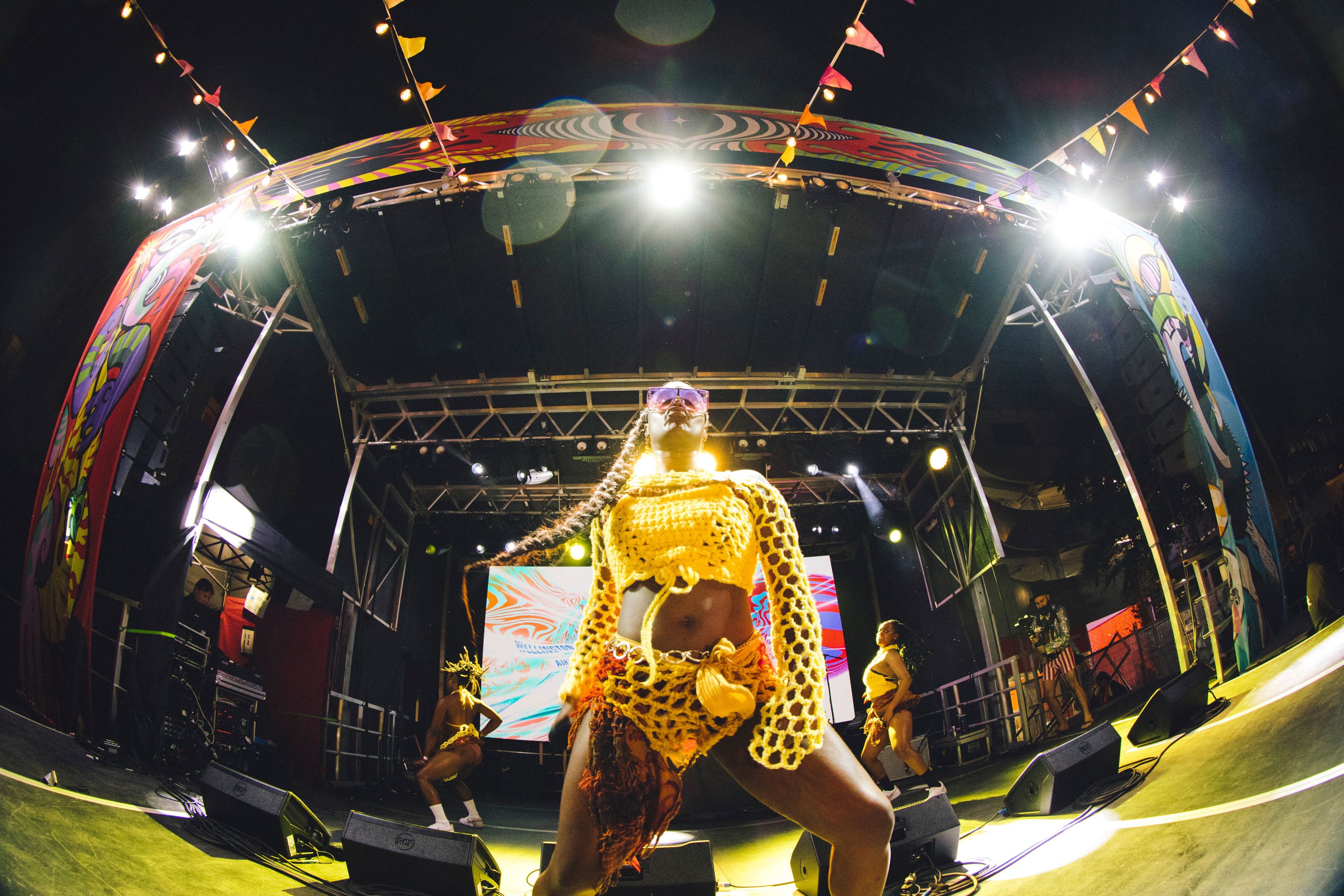
CubaDupa Festival and Music Producer Bianca Bailey adds "the aroha given by our community, artists and crew towards this weekend has been overwhelming. It’s been beautiful to see such a diverse programme come to life after two years. I’m so grateful we are able to put on this celebration to continue to uplift and support artists.”
The Dunedin Fringe Festival wrap party happened almost concurrently with these other events, being celebrated as potentially its biggest festival yet.
While they're still gathering their stats, organisers proudly proclaimed Dunedin Fringe hosted 67 live events from Aotearoa, Canada, the States, Switzerland, Scotland, the UK, and Australia and sold more than 5,000 tickets.
"That's over $93,000 of income that supports Fringe artists to create and share their work with audiences like you! (did you know that 100% of Fringe ticket sales go to the artists?!) We also hosted over 20 online shows from all over the world."
Swiss theatre/dance blend The Sensemaker was awarded Best In Fringe, along with the Excellence in Dance/Physical Theatre Award, while New Zealand creative collective Afterburner added more accolades to its Cold War homage Dark Radio, winning the Excellence in Theatre Award and Outstanding Technical Achievement. City Planners 2023 was also a double winner with Excellence in Visual Art Award and the Warwick Broadhead Memorial Award.
Nelson Fringe is feeling the positive impacts of moving its event to run off the back of its Dunedin counterpart, including attracting The Sensemaker to add a third stop to its New Zealand tour.
The festival comes to a close this weekend (1 April) - squeezing in over 80 performers in 40 shows into its 10 day run.
Wait and see for Auckland Arts
Unless you've been hiding under a rock - actually, scratch that...Even if you've been hiding under a rock, you'll have known Arts and Culture funding for Auckland has been underfire like never before.
Countless creative organisations - including The Big Idea - have urged their audience and supporters to make a submission to protest the jaw-dropping funding slash set to hit the sector in the proposed 2023/24 Auckland Council Budget.
Ngā mihi nui to all who took up the opportunity to have their voices heard.
The submission window closed on Tuesday night, with a total of 28,850 online submissions, breaking the previous record of 21,000 online submissions for the Emergency Budget 2020/21 during COVID-19 lockdowns.
While this number is preliminary and doesn’t include feedback received through other channels, the overall submissions are expected to almost triple last year’s Annual Budget 2022/2023 consultation, which received 11,500 submissions.
We have to wait until 26 April for the in-depth breakdown on whether enough was done to convince council that the proposed arts and culture $35 million funding cut should be reconsidered..
Council's Chief Financial Officer, Peter Gudsell states “the large number of submissions shows that Aucklanders are engaged with this budget.
“There are some tough choices ahead and these are important decisions that will be made on behalf of Aucklanders, so it’s great to see we’ve heard from so many."
The new budget will be adopted on 29 June.
The aforementioned Auckland Arts Festival is a good example of the impact investment in the arts can have on the city.
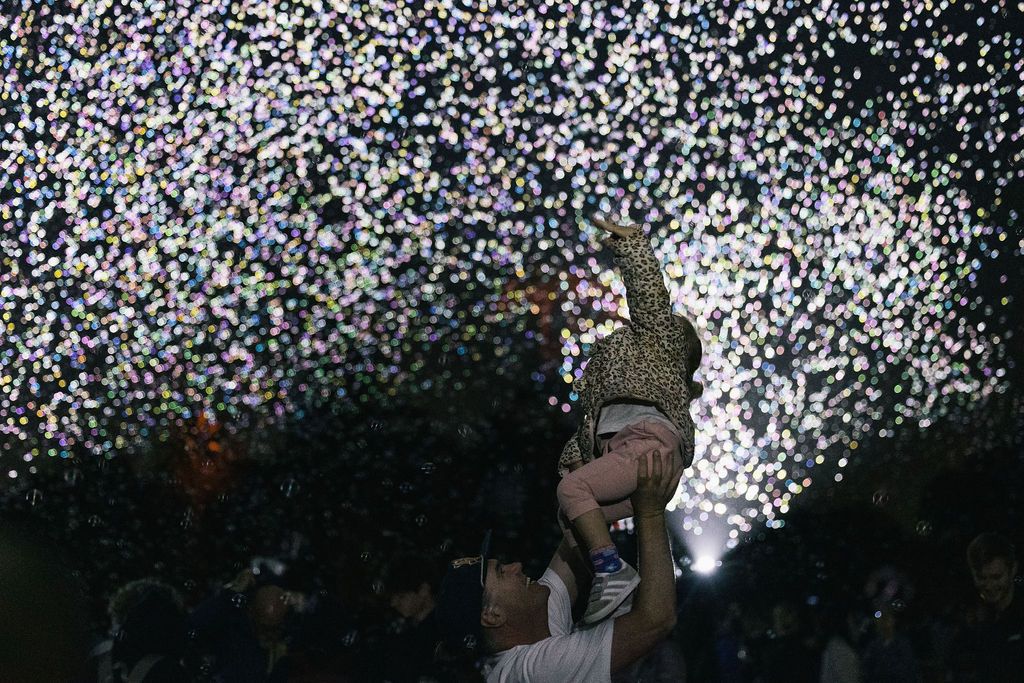
McCullagh noted the 20,000 who attended Daan Roosegaarde's free visual feast SPARK Auckland in the Domain left awestuck and the nightly buzz of locals pouring out of the Spiegeltent made the city feel truly alive again.
"The many, many standing ovations I witnessed throughout the Festival also saw people instantly expressing how uplifted they felt by these artists. These things make it all SO worthwhile – the arts are our oxygen, our nourishment, our reflection, our eye-opening inspiration, not to mention a key driver of the economy in Tāmaki. Imagine this city without its culture and beating creative heart?"
Not to mention it's impact on the next generation - at AAF alone, more than 1,000 school students attended productions at reduced price or took part in in workshops and discussions.
McCullagh muses "we always love the responses from our tamariki and rangatahi, at our kids, schools and special events, and from our accessibility audiences. That people, especially young people, can experience the arts in ways that suit their needs – such as in outdoor settings and in relaxed performances – means we can connect with people where they are.
"It’s not all about sitting upright in a theatre – it’s about feeling welcome, opening your eyes to new perspectives, seeing yourself on stage, and perhaps even with a future in the arts."
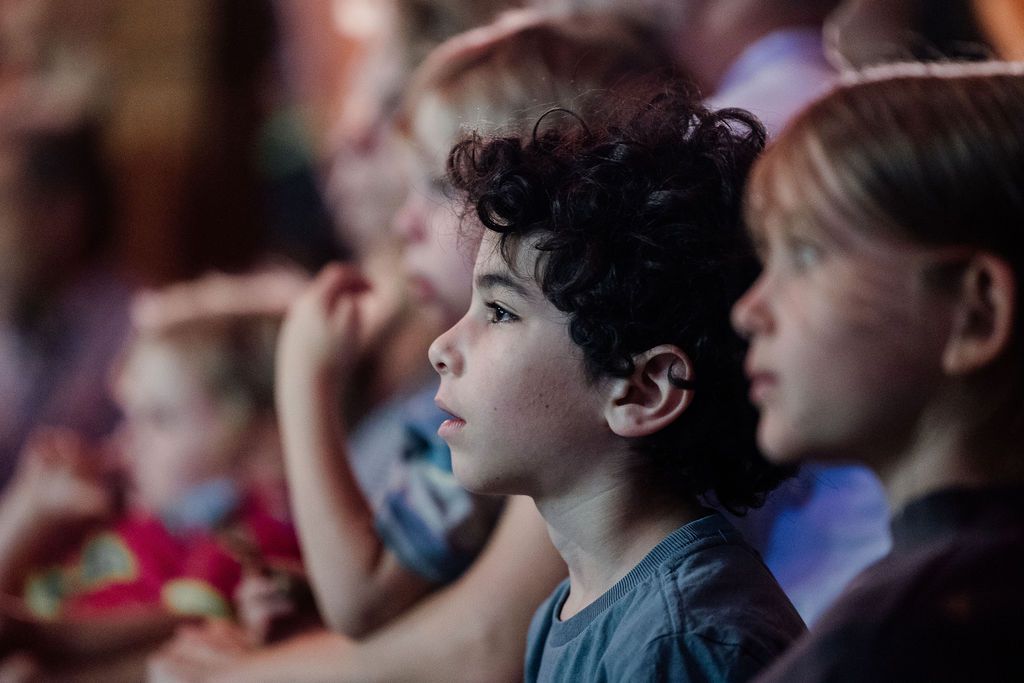
Hopefully that future is supported by Auckland's Councillors in the coming months.
Resale rights closer to reality
It's been a long time coming - and to be fair it is still coming - but the tireless work of advocates for artist's rights can feel a little closer to satisfaction today.
After last year's announcement of an Artists Resale Royalty scheme, the Resale Right for Visual Artists Bill was introduced at Parliament and had its First Reading on Wednesday.
Minister for Arts, Culture and Heritage Carmel Sepuloni has stated “an artist resale royalty scheme in Aotearoa New Zealand is long overdue. I’m confident that this Bill strikes an important balance between recognising the contribution that artists make to our communities and the economy, whilst allowing a valuable secondary art market to flourish and protecting artists at the same time."
You can read all the details on the bill here on The Big Idea as well as reaction from leading advocates in the sector.
Sir Ian Taylor not backing down
While Sepuloni deserves to be acknowledged for her role in bringing this scheme closer to reality, she's also facing public calls for comment on the ongoing disapproval of the Creative New Zealand (CNZ) Digital Arts Service partnership with the polarising We Are Indigo.
Sir Ian Taylor is doubling down on his comments last week - after receiving no reply from CNZ or the Minister's office.
So this time, he's directed his questions directly at Sepuloni. As noted in last week's Lowdown, Associate Minister for Arts, Culture and Heritage WIllow-Jean Prime has been tasked with responsibility for the Crown's dealings with CNZ, but she wouldn't comment citing it's an operational matter.
But that hasn't stopped Taylor asking Sepuloni again publicly.
He has again raised the usual questions regarding who knew and who is comfortable with the CNZ process regarding the Callaghan Innovation conflict of interest (details for the backstory here).
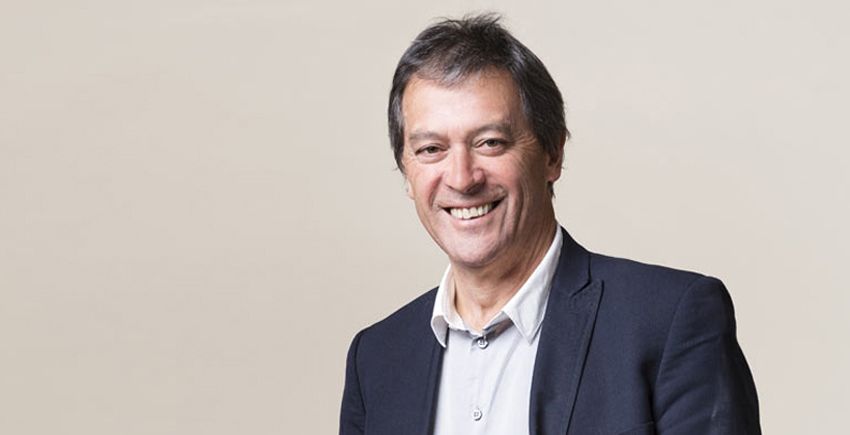
Taylor (above) has taken it a step further, inquiring of Sepuloni "Can you ask the Chair of CNZ how many applicants took part in the EOI (Expressions of Interest) put out for a Digital Agency that was published on March 2nd 2022 and closed on March 16th?
"I know there were at least three because the internal report to the CNZ board that I have access to confirms that there were at least 3 applicants who were all worthy of being awarded the contract.
"The answer to this is important because I am assuming that, under the ‘no surprises’ principle, you were made aware of the fact that following the closing of the EOI in March, and before the announcement of the successful applicant in December, CNZ set up a separate fund which went to one of the those three applicants to help advance its case."
Taylor continues to allege "my understanding is that, despite the fact that this fund was over the $100,000 limit that normally requires a formal RFP (Request For Proposal) under the GETZ process, that did not happen in this case.
"This fund was then used to pay 10 participants $3,000 each whilst another 10 were asked to provide their knowledge and assistance for free. Of those 10, 7 left because they were dissatisfied with the process.
"So my question here to you as Minister is:
"Were either of the other two entrants that were ‘worthy applicants’ given similar resources to help build their case and why was a company that was a virtual start up itself, with no track record at all of having worked in this area prior to making an application for this $5 million fund, given what appears to be preferential treatment?
"You do know that that there is a feeling out here in the Pasifika and Māori creative sector that this process was put in place so that CNZ could then argue that the final winner of the $5 million fund could claim that they had prior experience of working with CNZ and within the Pasifika and Māori creative sector?"
This conversation shows no signs of abating.
Speaking of the We Are Indigo saga, initial and most vocal antagonist Robett Hollis - who has been consistently calling for more ownership and redemption actions from the innovation organisation as well as on CNZ to review its partnership with Toi Hourua - has been served a cease and desist from a King's Counsel on behalf on Manaaki's directors.
Don't expect that to halt his momentum any time soon either, as he states "with the truth behind me, I seriously don't give a shit who's in front of me."
Asia calling
Reconnecting with the creative world beyond our shores has been one of the true highlights of the last year - they've always been special opportunities for Aotearoa's creatives and they are certainly not taken for granted after living through closed borders.
Among those enjoying having their horizons widened are hugely admired creative forces and arts producers Rosabel Tan and Sums Selvarajan.
As two of the 13 New Zealand-based arts practitioners to benefit from the return of the Asia New Zealand Foundation’s Arts Practitioner Fund, they've been at Bangkok International Performing Arts Market (BIPAM) over the last week - before linking up Word Christchurch CEO Steph Walker for the Asia Producer Platform Camp starting this weekend.
Tan told The Lowdown they "feel so incredibly lucky", adding "opportunities like these that don't focus on an outcome are so rarely funded but are so integral: they help us build stronger relationships with our international colleagues and collaborators, and to deepen our intercultural understandings — and that's so fundamental for working together and understanding where Aotearoa sits in an international context.
"Over the past few days, we have had the immense privilege of listening to many conversations that feel critical across Southeast Asia in particular right now, including what it means to keep artists safe against a backdrop of political instability and censorship, and how we capture, challenge, and question the histories that are being recorded and passed on.
"We heard about the 'fuck up parties' thrown by independent producers in Singapore — a chance to share mistakes, to learn from one another, to celebrate each other's work — and the way that the Asian Dramaturgs' Network are questioning colonial constructs in a similar way to diaspora practitioners in Aotearoa, including at a foundational level what it even means to use the word 'Asian'.
"We learned how things have changed in post-revolution Hong Kong, and we heard from an artist from Myanmar, who has made the decision to stay, who continues to stay, who feels so alone, who continues to make art.
"On one of the mornings, we went on a walking tour that was essentially a tour of gentrification in the neighbourhood, and as part of that we visited a small shrine that was surrounded on three sides by towering construction sites. Standing in front of that shrine, the noise and the dust and heat felt so immense. We were told that despite newer, fancier shrines being built nearby, this was the shrine everyone felt loyal to.
"It felt like an echo of everything that we had been discussing that week: what happens when artists and communities' voices are left behind, and how cities are reduced to nothing without their people."
Asia New Zealand Foundation’s Arts Practitioner Fund has been on ice since 2020 - as you can imagine - and its return means Aotearoa based artists and arts professionals have a chance to deepen their creative connections.
Over the next few months, public gallery curators Abby Cunnane, Amy Weng, Mel Oliver and Sophie Davis will attend the 14th Gwanju Biennale in Korea, creative Ufitia Sagapolutele will undertake a three-week residency at Malaysia's Rimbun Dahan Arts Centre, the multi-disciplinary Allan Xia will be part of a research tour of Taiwan's Indie Arts Sector, artist Georgie Hill having her research tour in Tokyo, theatre maker Chye-Ling Huang will begin his residency at the Chinese European Arts Centre in Xiamen while Daniel Belton will so the same with Japan's Idiot Savant Theatre Company, and Guy Howard Smith at the All-India Anglo-Indian Association in Kolkata.
The next round of applications for the Art Practitioner Fund will close on 1 May.
Write steps to success
That's not the only opportunity for creatives to spark up a relationship with Asia.
The Michael King Writers Centre is calling for applications for mid-career or established New Zealand writers to take up a residency in Shanghai from 1 September to 31 October - complete with inner-city accomodation, a stipend for living expenses and return economy class air travel.
Put together in partnership with the New Zealand China Friendship Society and the Shanghai Writers’ Association, successful applicants will take part in discussions and literary events as part of the programme. It's part of a reciprocal arrangement where Chinese writers in return hold a residency at the Michael King Writers Centre in Devonport.
Applications are open until 24 April.
Also on the literary front, The New Zealand Society of Authors have announced 13 emerging writers have been chosen for its 2023 Mentorship Programme.
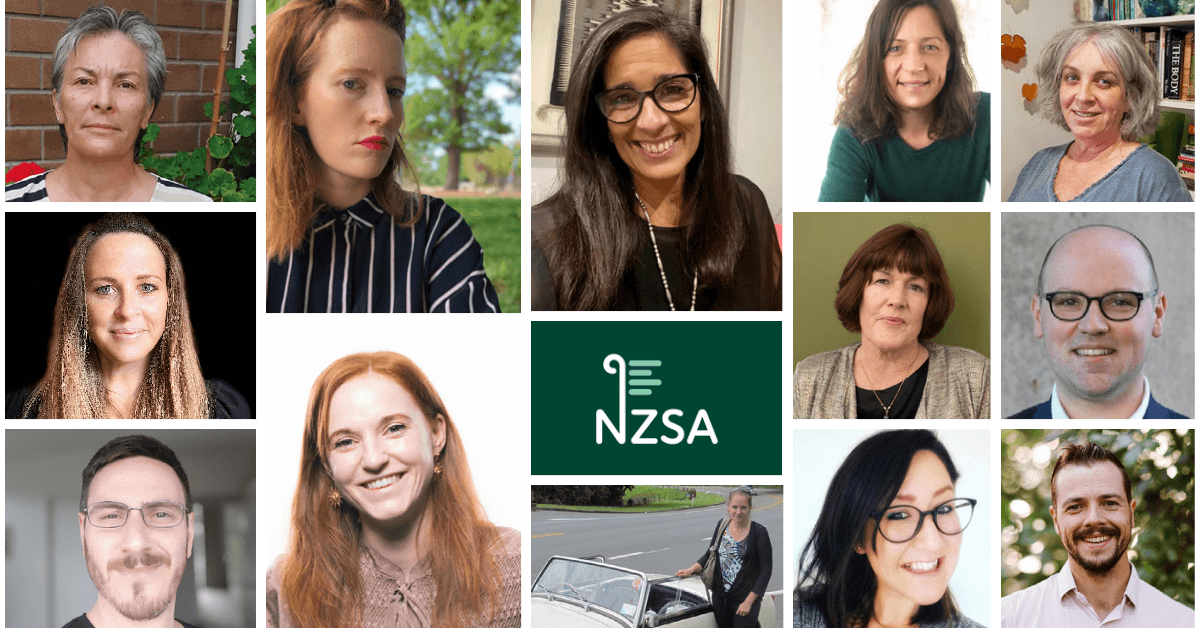
Paddy Boylan (Christchurch), Cheryl Evans (Tauranga), Hannah Field (Brighton, UK), Rachael Gordon (Taihape), Joseph Janiszewski (Auckland), Merryn Jones (Hastings), Sara Litchfield (Te Anau), Jo Luke (Huntly), Lucy O'Connor (Porirua), Christopher Reed (Auckland), Kathryn Saunders (Manawatu), Frances Turner (Auckland) and Eileen Woodhead (Napier) will spend the rest of the year honing their skills and developing their craft under the mentorship of some of New Zealand’s finest professional writers.
There are some great names to choose from in that list including former Jann Medlicott Acorn Prize for Fiction - and nominated again at this year's Ockhams - Catherine Chidgey, PM Award for Literary Achievement recipients Anne Kennedy, Stephanie Johson and James Norcliffe among them.
Birds and the bees
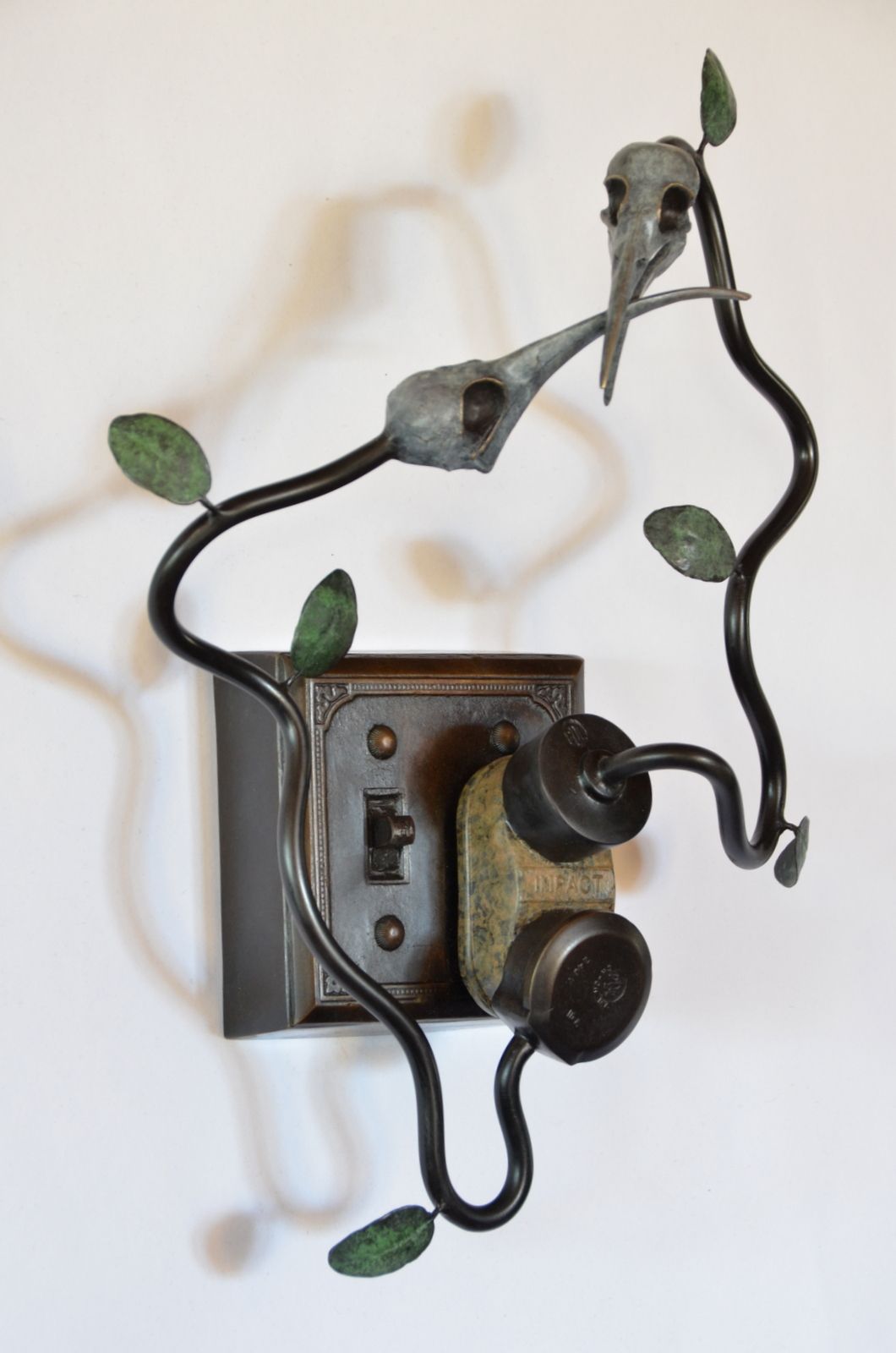
A lucrative opportunity for 54 sculptors - as well as some well-deserved spotlight.
The finalists have named for this year's R.T Nelson Awards for Sculpture, which will be displayed at Wellington's TSB Arena 2-3 Junes as part of the NZ Art Show.
It's not just an exhibit, it's a sale - with the finalist artworks available for purchase to encourage not just the celebration of excellence but to promote a market for small-scale sculptures. As for the prize money, the awards feature a $15,000 premier prize and five highly commended prizes of $1,000 each.
The finalists have produced work from a range of materials - including pounamu, stone, wood, glass, bronze, stainless steel, urethane, silver, gold, clay, copper, concrete, feathers, taxidermy, resin, and harakeke.
One of the more unique sculptures in the running has been dubbed a collaboration between an artist and her bees.
Te Horo artist Kim Kobialko was inspired to create a beeswax sculpture for the awards. "I began thinking how I could take the beeswax into a 3D sculptural form and push the boundaries of what I already do.
"There was a lot of experimenting and trial and error before the bees played ball. But we got there in the end. I'm delighted with the result."
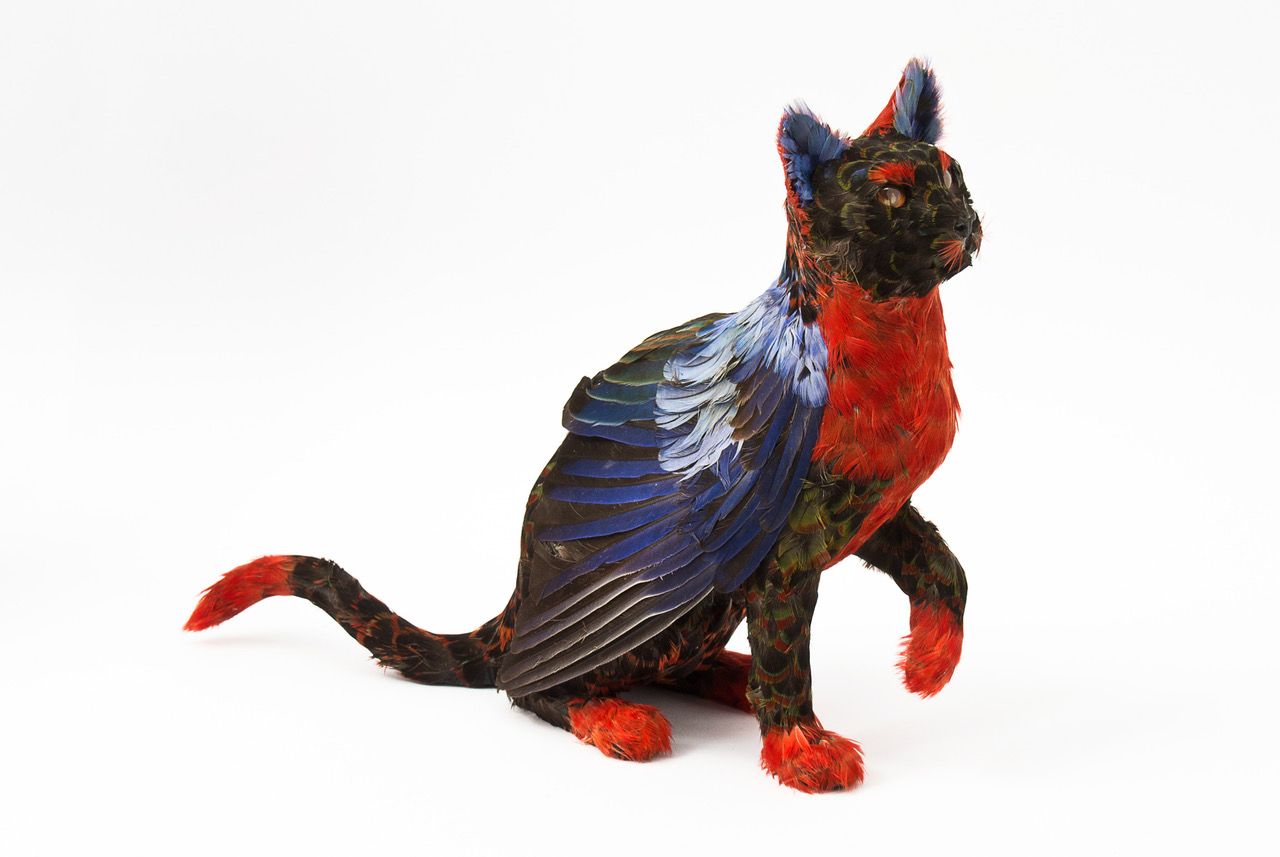
Taxidermy's also in the running - thanks to Emily Valentine and her feathered kitty (above).
Seeing last year's exhibition was the pushed Wellington fine-jeweller Steph Lusted needed to create a work that's made the final 54.
“It is so rare to have small scale works focused on, especially with an awards opportunity so I am really looking forward to taking part."